Hello friends! Today we offer to talk about virtual reality. There are two reasons for this. First, on October 17th, the release of the Microsoft Mixed Reality VR platform. Secondly, on October 20 we will open the Russian sales of our VR helmet Lenovo Explorer. In today's material we will tell you what all this threatens and how it all works. Welcome under the cut!

It’s no secret that the first wave of VR devices was by and large only interesting for a narrow circle of enthusiasts. And still in demand in the "professional" segment - to create a wow effect when selling real estate, educational applications, design programs, etc. For the mass user, all this was not clear enough, too expensive and frightening away with a small amount of content.
However, more than a third of all the delicious VR-pie even now accounts for the game. In the future, this proportion will only grow. Analysts at Goldman Sachs, for example, suggest that by 2025 the annual size of the market for VR games could reach $ 106 billion, profits from their sale - almost $ 12 billion, and the number of players will overcome the mark of 200 million.
But this is a bright future, and we are still in a cozy present, and the situation at the moment is as follows. First, it is obvious that the virtual reality will become the further growth driver for the industry. Second: before, both the users and the manufacturers of VR-helmets themselves did not fully understand what they should be. Now both those and others have a lot of experience - it's time to move from a niche to a mass segment.

Well, the third is just the release of the Microsoft Mixed Reality platform, which will be a powerful incentive for popularizing VR. If the framework turns out to be quite popular, then it has every chance to repeat the success of DirectX with all the ensuing advantages for programmers and users.
It turns out that any conventional "Uncle Liu Hut" will be able to release their indie games in virtual reality. A popular single standard is also simplicity and economy for large game makers. At the same time, it is possible to customize the controllers. Well, for the end user, there are solid advantages: more content and less price due to competition between manufacturers of VR gadgets.
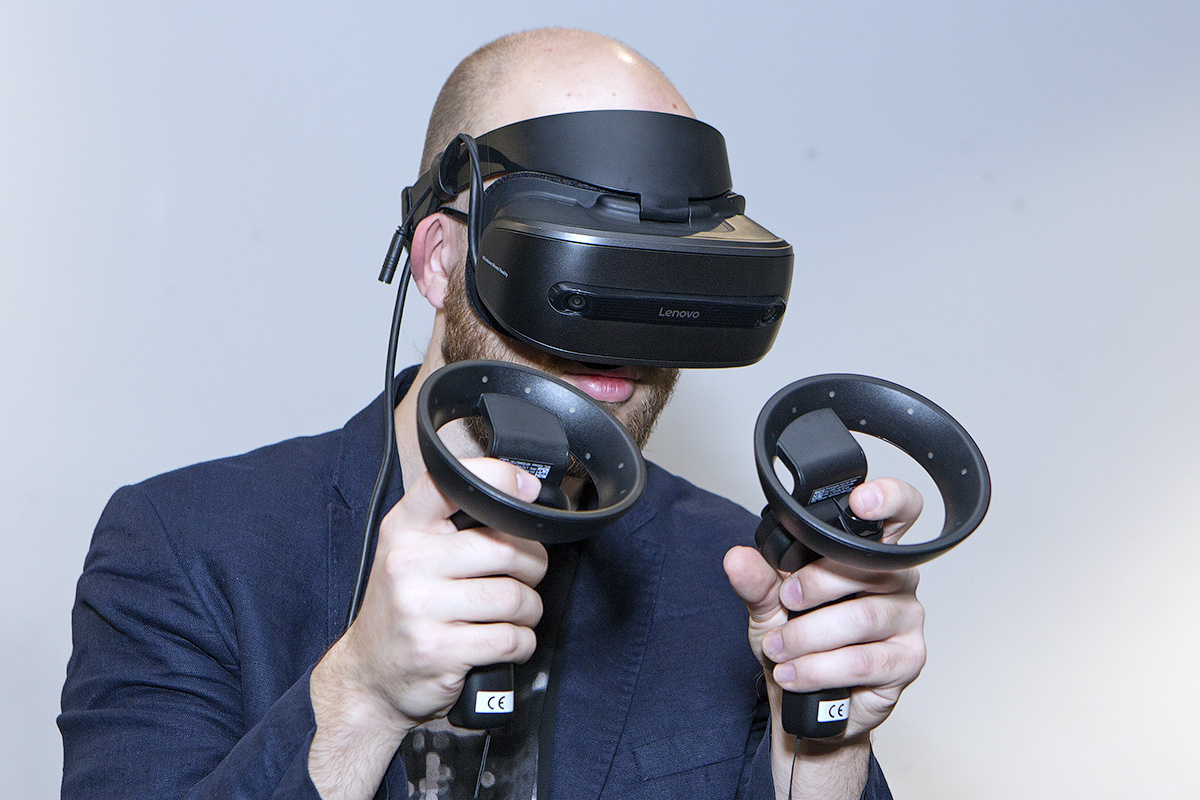
Lenovo Explorer
Meet: This is Lenovo Explorer, our virtual reality helmet, created for the Microsoft Mixed Reality platform. Perhaps one of you even managed to test it in action at the Igromir 2017 exhibition. In Russia, we demonstrated the novelty for the first time there, and this is just the beginning.
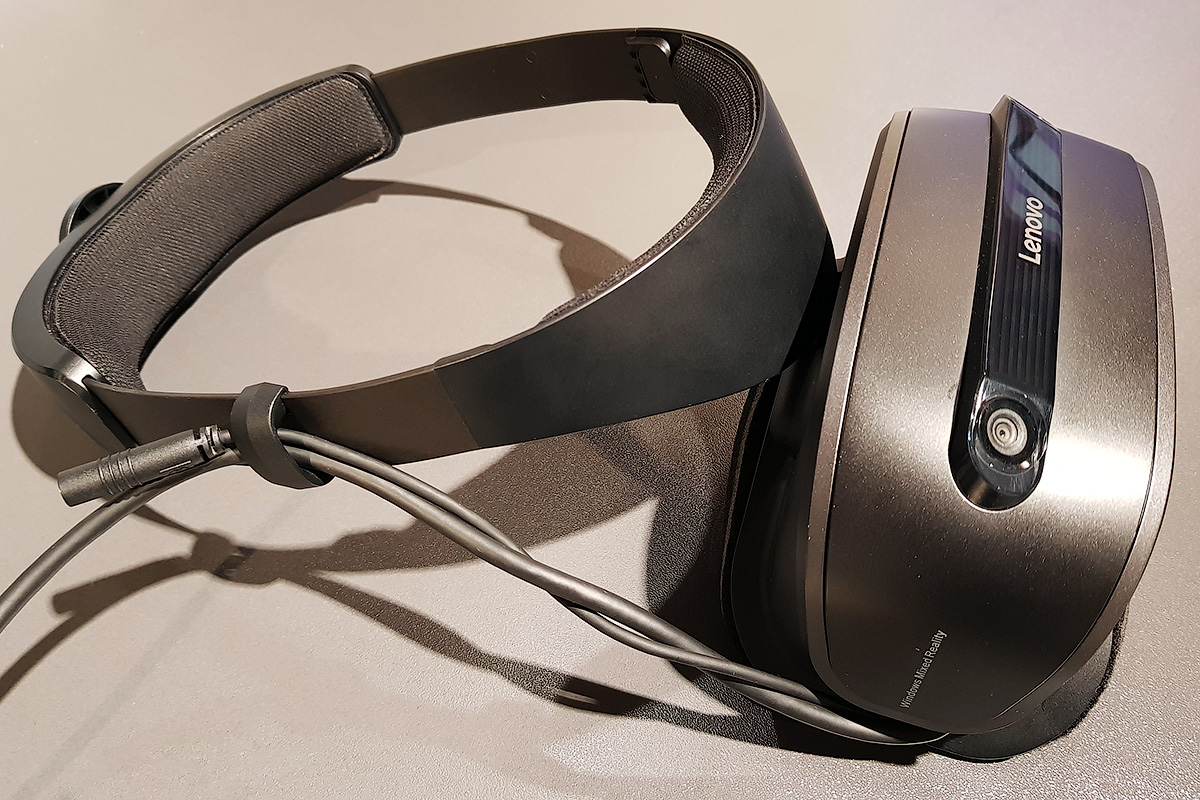
Consider it from all sides in detail. First of all, the important thing is that the gadget is very light: it weighs only 380 grams. Significantly less than the main competitors. In addition, it feels much lighter and more convenient due to the thoughtful weight distribution on the head.
The second significant point - a convenient mount. On the back of the helmet there is a small "twist", with which you can very firmly and securely fix the device on the head.
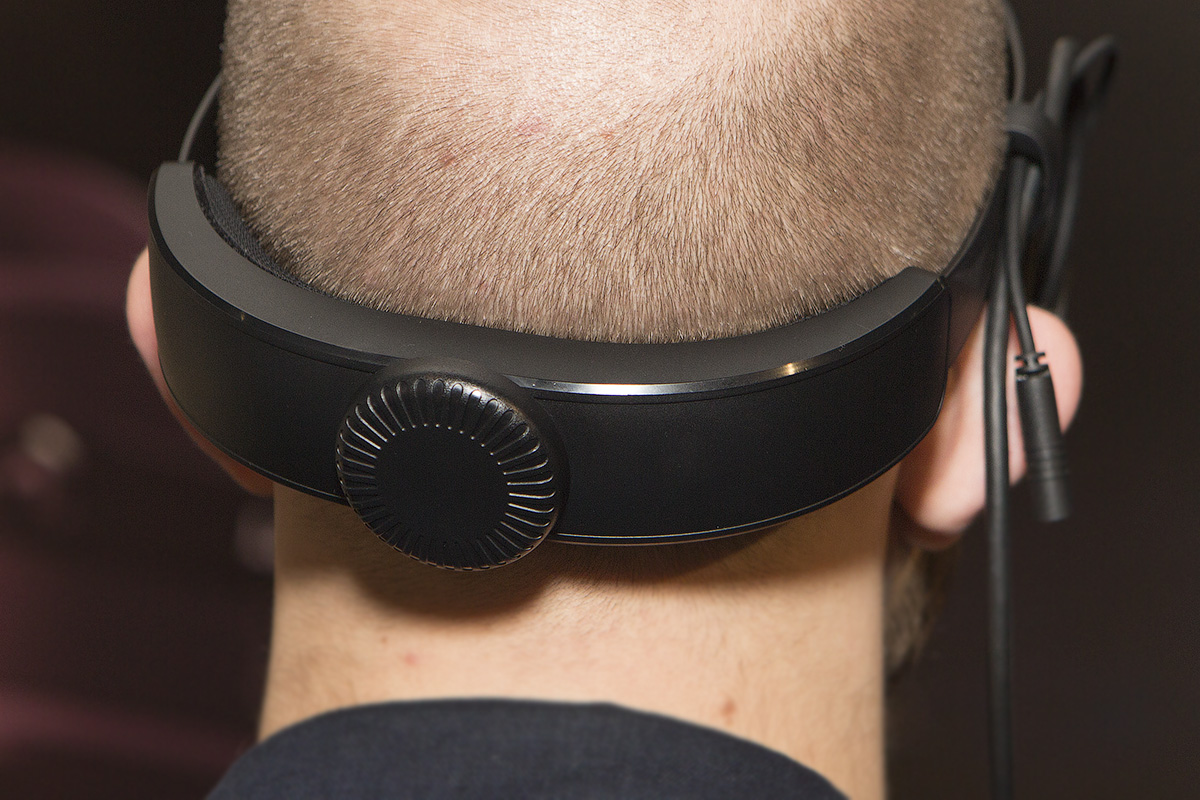
And the thick and soft linings will make it so that the pressure will be minimal. Here, of course, it’s better to try once than to see a dozen photographs, but here’s an indicative fact: practically no one complained about either Igromir or our joint test with journalists about the convenience of landing.
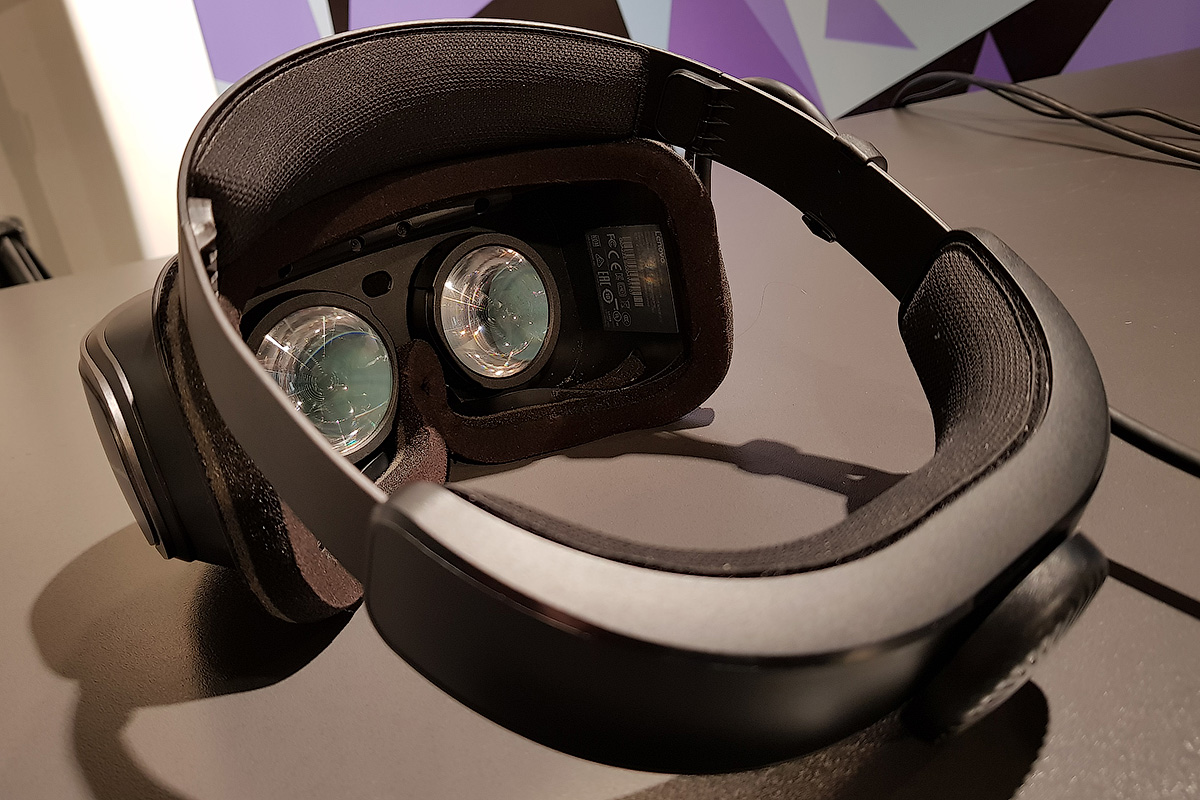
We go further, to the most important thing. Lenovo Explorer is equipped with two LCD-screens with a resolution of 1440x1440 pixels. As a result, the user's eyes see a picture with a resolution of 2880x1440 pixels. Again, this is again more than the VR helmets of our esteemed competitors, whose helmets came out earlier. If you look closely, pixelation, of course, is there, but it practically doesn’t catch the eye.

The viewing angle in our helmet is 110 degrees, the focal length adjustment software: in the range from 59 to 67 mm. And - for many it will be a pleasant surprise - the helmet can be used without any problems with ordinary glasses. Tested both during our own tests, and at "Igromir". Approaching the zone with Explorer, many visitors to the exhibition used their usual gesture to take off their glasses, but we asked them to leave. Joy and surprise in the end there was no limit.
If suddenly, while you are immersed in virtual reality, someone has decided to distract you, then it’s not necessary to remove Lenovo Explorer. You can simply lift the main part of the helmet with the displays and lenses up as the visor. Conveniently!
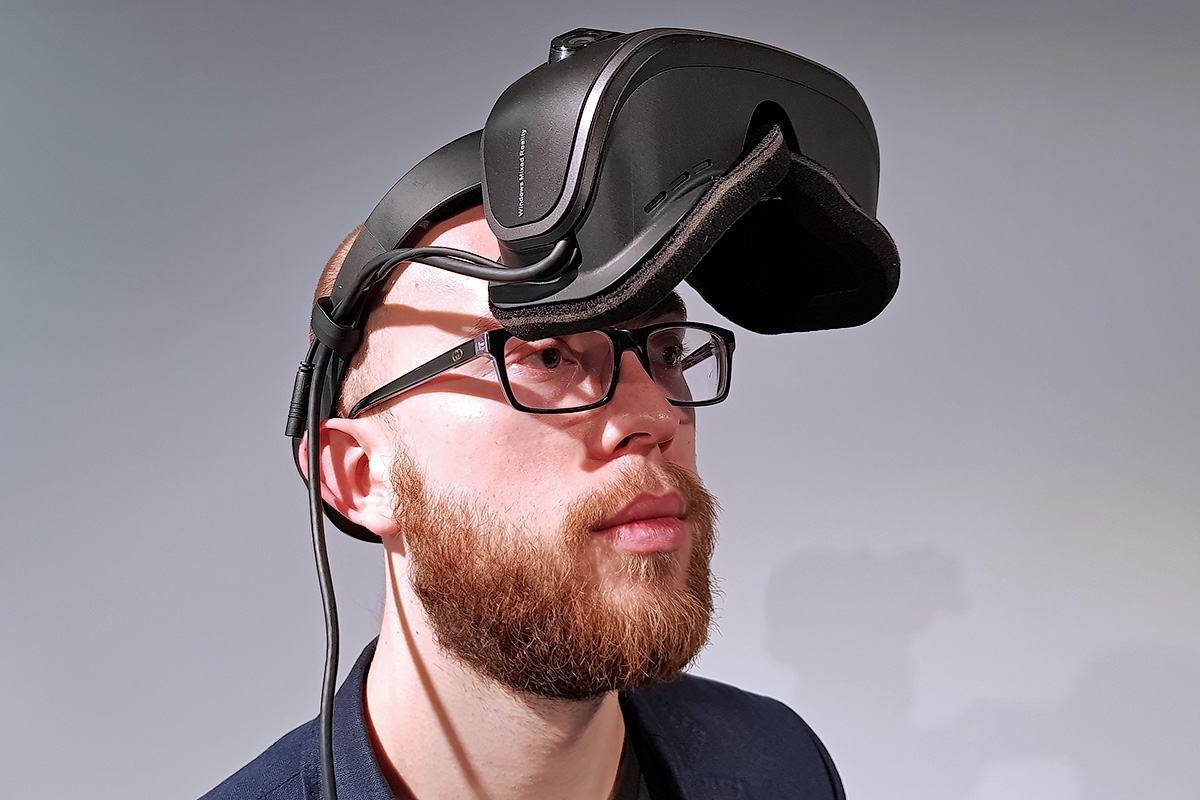
Now let's talk about connecting to a computer. A huge number of ports is not required for this: you need only two interfaces - USB and HDMI. Everything. The length of the wire is 4 meters. Enough to move within the average Russian room and not stumble. The key point is that no external sensors are required, which means there will be less space in the room and no free ports, and less cables around it.
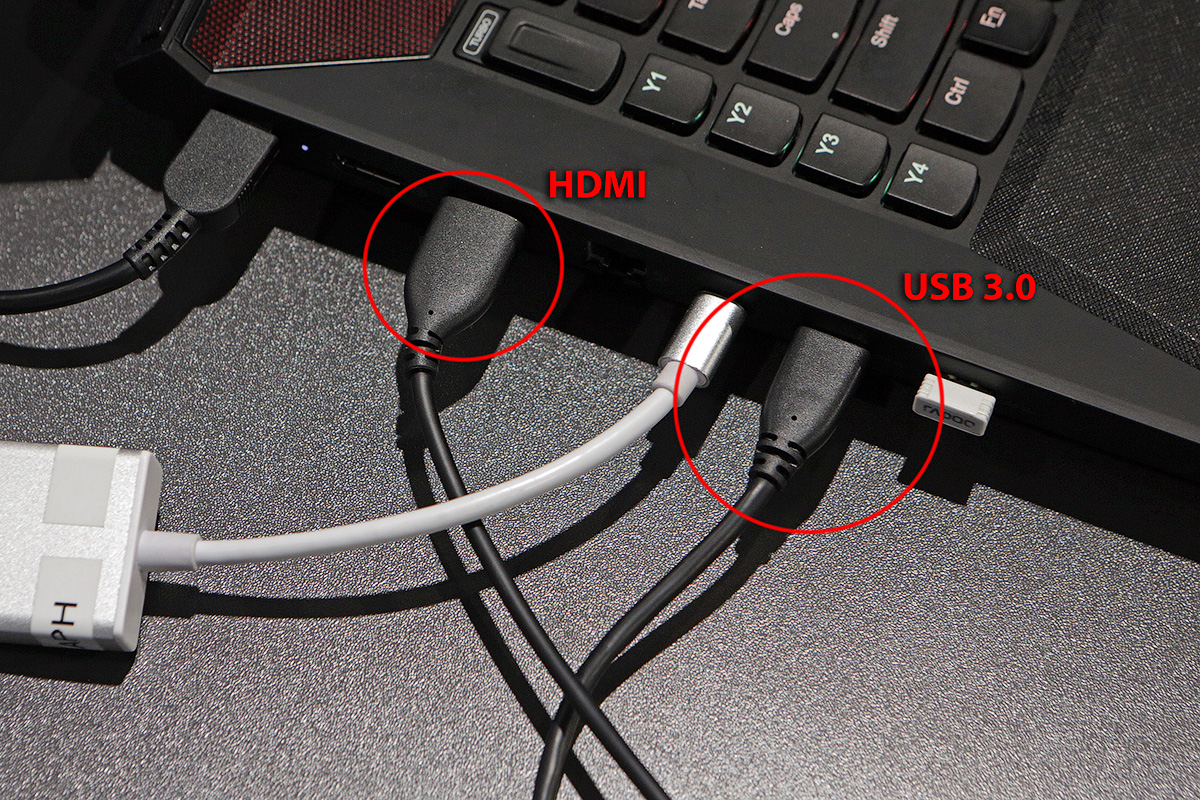
For viewing virtual excursions, 360-degree videos and panoramas, applications work there will be enough a laptop with a 7th generation Mobile Core i5 and integrated graphics. The refresh rate in this case will be 60 Hz.
For VR games, a different set of hardware is recommended, a discrete graphics card from the GTX1060 comes to the forefront, but the new processor may not be there - the desktop Core i5 from the 4th generation will suffice. The reason is not only in the high resolution of the picture (we recall, this is 2880x1440), but also in the fact that the refresh rate here is 1.5 times higher - 90 Hz. But we still need 60 fps, otherwise there will be no normal synchronization.
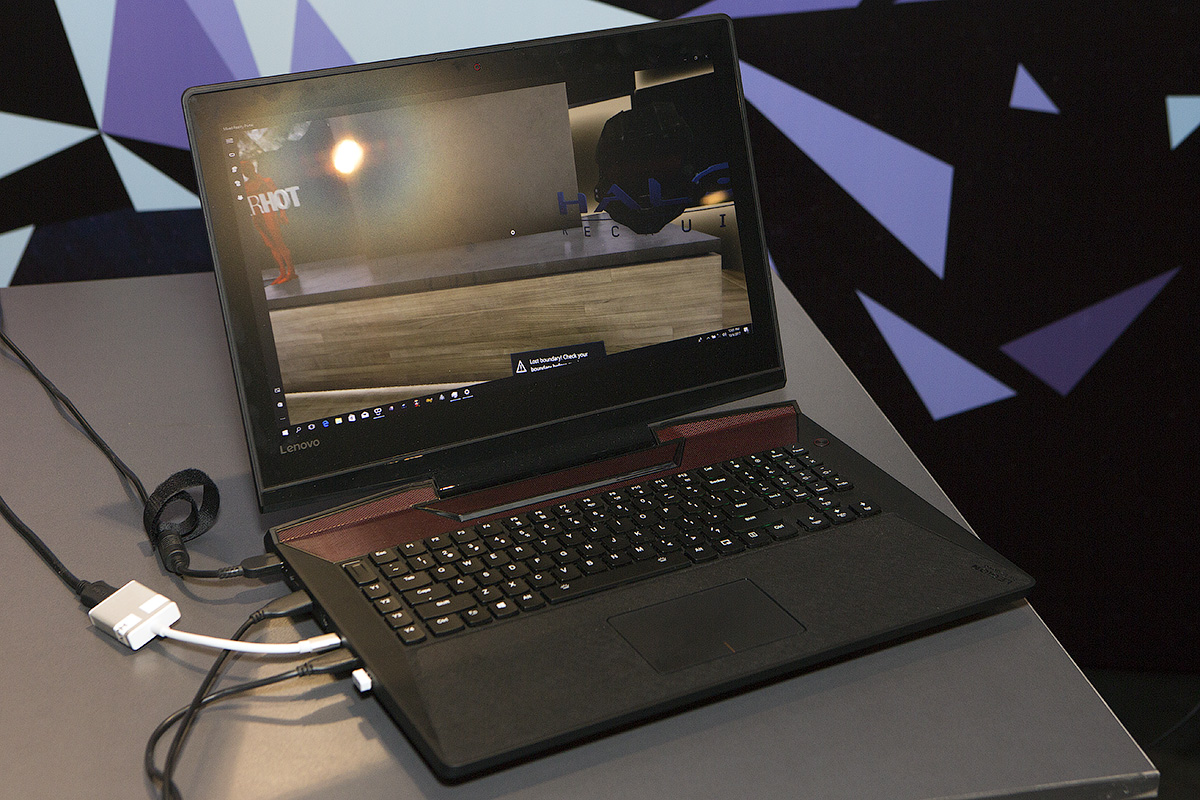
By the way, about the smoothness of the picture. We strongly advise you not to judge it by YouTube demos. From the actual it is very different for the worse. This is exactly the case when for a reliable assessment everything must be seen in the helmet with my own eyes. For example, the duplicate image on the screen can lag and even twitch, but in the helmet itself, everything works smoothly and well.
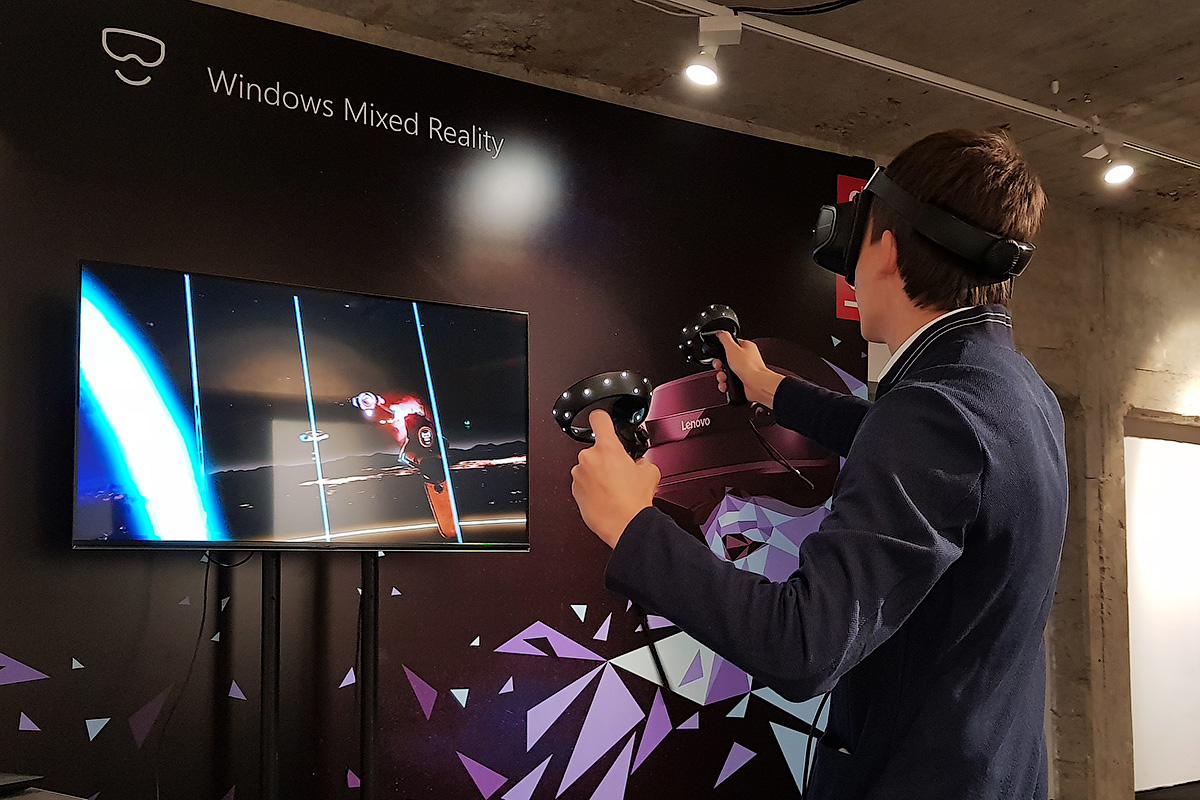
Lenovo Explorer does not require any external sensors to track its position in space. A set of integrated sensors and two cameras built into Explorer are responsible for this. They are also needed for positioning controllers. But if the controllers suddenly disappear from the zone of visibility (for example, when in some games you pull out weapons from behind), then in this case they also have their own sensors. They work on AA batteries, but there is also the possibility of a wired connection.
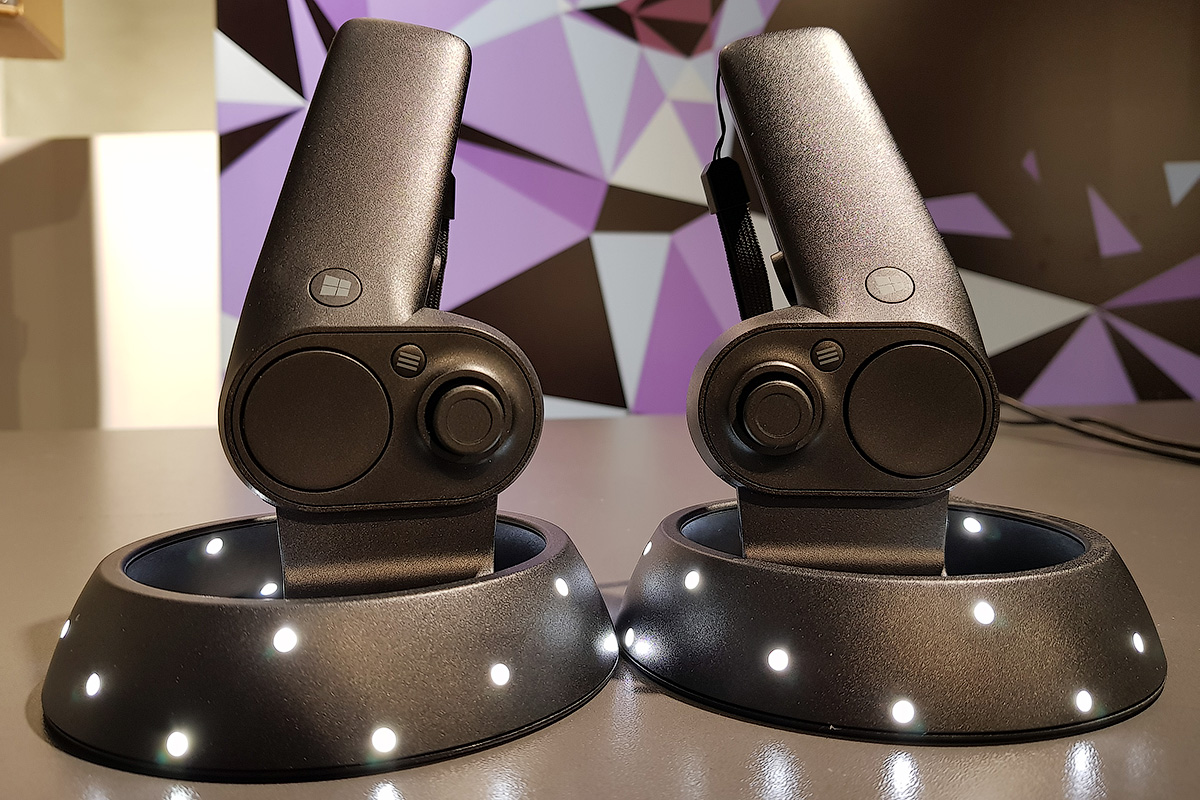
There are no integrated headphones in Lenovo Explorer. To connect them on the right side of the helmet there is an “audio jack” on a short wiring - for mobility. The disadvantage of this solution is only one: this is how an additional wire appears. But more advantages: the device becomes cheaper and easier. Plus you can use any of your own headphones, and for many users this is a whole fetish.
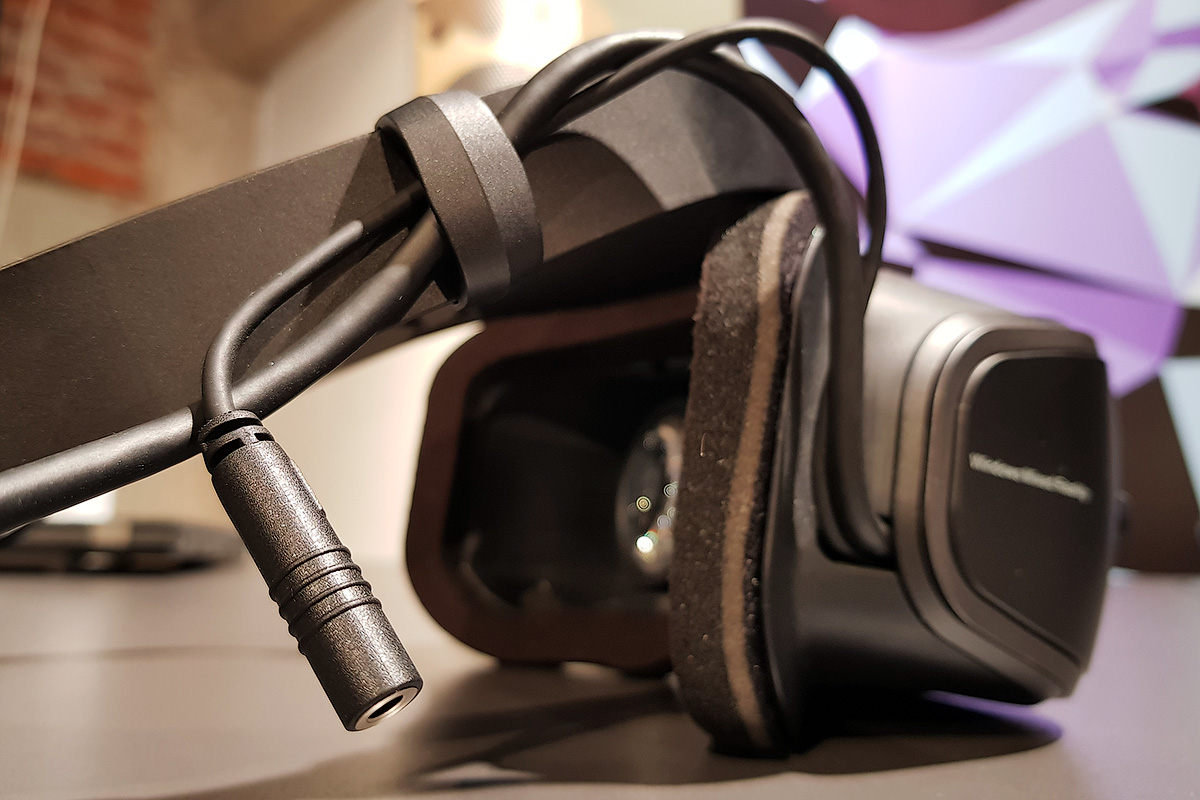
Microsoft Mixed Reality
With the helmet more or less sorted out, now a couple of words about how the platform for which the user looks like looks to the user. Visually, this is a very cute house, standing on a rock near the ocean. Somewhere far and far in the middle of the sky flying islands soar. Remains perhaps that the sound of the waves and some light lounge to include ... but something we digress. Of course, there is no talk about absolute realism, but inside it is very cozy.
Moving inside the house takes place with the help of controllers. We press the button, select the desired point and use the stick to determine the direction towards which I want to look immediately after teleportation. If before this experience of immersion in VR was not, then in the first 5-10 minutes it seems unusual, but then you completely forget about it and do everything on autopilot. In extreme cases, you can use the keyboard with a mouse or an XBOX controller.
Items inside the house can be moved and rotated. This is the basis of the principle of working with applications that can be freely hung on walls, ceilings and simply in the “air” in the middle of rooms. For example, on the left is an Excel spreadsheet, in the center is an open database, the numbers from which the table needs to be filled in, and on the right is the background serial number. Alternative options weight.
The house itself is divided into several rooms, each of which in the demo version is needed for exploring certain possibilities. In the cinema, we watch a normal video, in the working area we drag here and there windows with programs, there is a corner with VR excursions and 360-degree rollers and panoramas.
Plus, of course, the game zone. And then the most interesting thing. We chose three projects as “demos”. The first one is a simple shooting gallery based on the Halo universe: we take two guns in our hands and violently shoot targets in the allotted time. In the gameplay video below, the whole movement starts from 1-50:
The second project is a VR version of the acclaimed Super Hot. Time goes here only at the moment when the player moves. You can calmly look around and plan tactics, and then carefully dodge bullets, throw bottles and ashtrays at your enemies, take away their weapons and, of course, throw the adversaries to the ground with precise blows to the jaw.
The third project is perhaps the most revealing one: this is the Space Pirate Trainer, a full-fledged shooter. The player is standing on the platform and violently shooting drones getting out from everywhere. From time to time bonuses and new weapons appear in the air, which can be changed, as if pulling from behind with the help of a joystick. While enemies make a shot at the player, time slows down a bit, leaving chances to dodge nicely and immediately get revenge. Very addictive! At first it is unusual that it is necessary to dodge just the body - squatting or taking a step to the right.
Of course, this is also only the beginning. There are a lot of different games now, and in the future it will become even more. Including upcoming VR versions of Fallout 4 and Doom. Like Bethesda, other serious publishers are not sitting on their backs either - unconfirmed rumors about the integration of helmets with Steam VR go.
In order for a cozy house in the middle of the ocean to start on the hard disk of your computer you will need Windows 10 Fall Creators Update and a little patience. Right on October 17th, all the necessary files will be automatically downloaded and installed, and all VR games will be available for purchase and download from the Windows Store. Connecting Lenovo Explorer to the platform will also have no problems. Everything is arranged so that the user only inserts two plugs from the helmet's wire into the ports of his PC, and then everything is set up, installed and downloaded by itself.
Better to see once than ten times to hear
There is no doubt that VR is serious and for a long time. The only question is when virtual reality will become truly massive. We believe that the active phase of growth in the consumer segment will begin in 2018 and rely on games as the main growth driver for the entire industry. At the same time, we do not forget about other usage scenarios, such as virtual tours, three-dimensional and 360-video, design and training in virtual reality - all this is now much more accessible.
At the same time, we understand that potential buyers necessarily need the experience of immersion in VR. Otherwise, it is simply impossible to understand whether it is worthwhile to acquire a helmet or not. That is why, together with the start of sales of Lenovo Explorer on October 20th, we will open several demo zones in M.Video stores, where gadgets will be sold as exclusive until the end of the year. And this will not be a one-time action at the time of the launch, but a permanent, let's say, exposure. I want to VR-helmet, but there is no certainty that it is needed and fit? Please go and try.
The cost of Lenovo Explorer will be 39,990 rubles, but if you
pre-order , you can save 10% - you get about 36 thousand. The controllers are already included here, because making a bet on the games there is absolutely no sense in offering a helmet separately from them.
On this, it seems, everything. Thanks for attention!